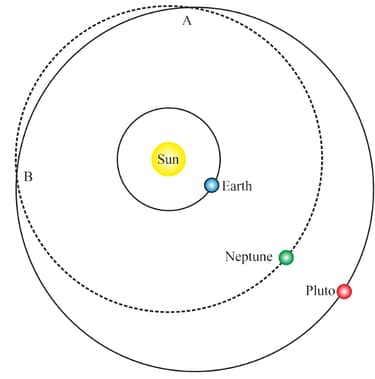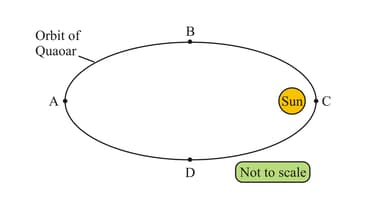The diagram below shows the orbits of Neptune, Pluto and the Earth. At two points, A and B, the orbits of Neptune and Pluto cross over each other.

(a) What force keeps planets in orbit around the Sun?
(b) Give two reasons why it takes Pluto more time than Neptune to orbit the Sun.

Important Questions on Stars and the Solar System
In 2002 a large asteroid was discovered orbiting the Sun. It was named Quaoar. The diagram below shows Quaoar in four positions in its orbit.

In which of the four positions, A, B, C or D, is the effect of the Sun's gravity on Quaoar the greatest? On the diagram above, draw arrows to show the direction of the Sun's gravity on Quaoar in each of the positions A, B, C and D.
The table below gives information about three of the planets in our solar system.
|
Planet |
Average distance from Sun (millions of km) |
Time for one orbit (Earth years) |
Average surface temperature of the planet (ºC) |
|
Saturn |
1427 |
30 |
–180 |
|
Uranus |
2870 |
84 |
–210 |
|
Pluto* |
5900 |
248 |
–230 |
How does the surface temperature of these planets vary with distance from the Sun? Explain why the temperature varies with distance from the Sun in this way.
* Pluto has been demoted and is no longer a planet - but when this question was written it was classed as a planet.
